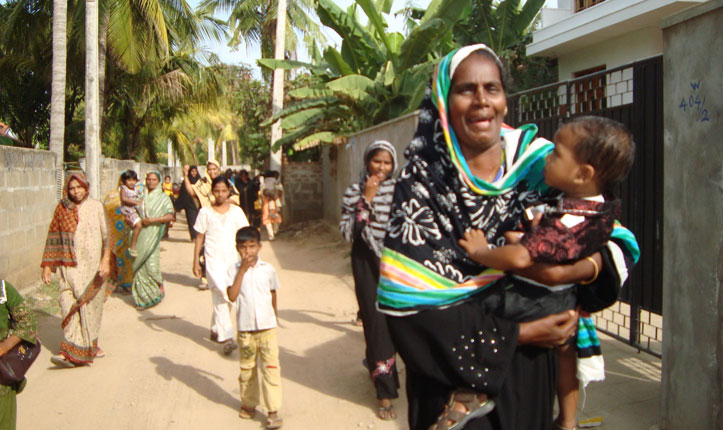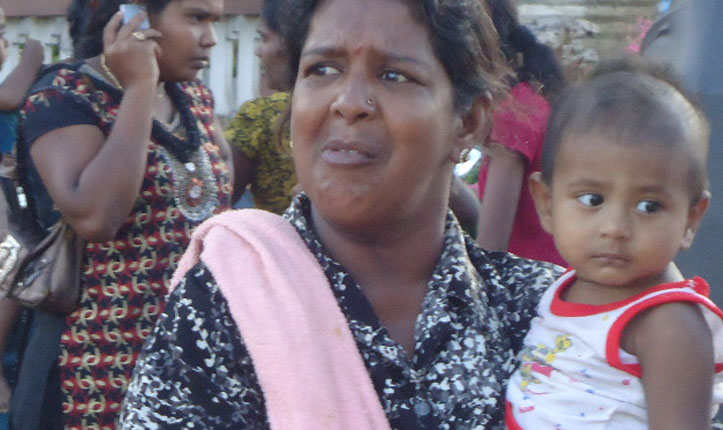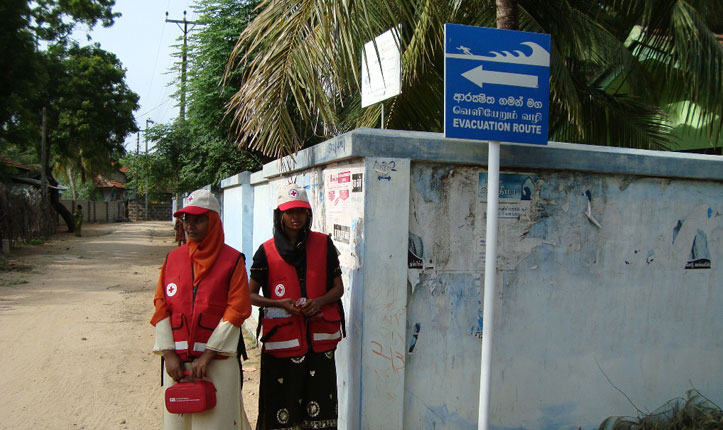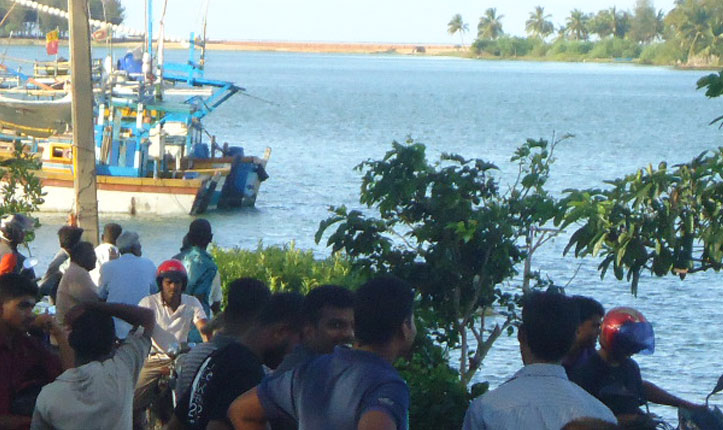Investment on mitigation & early warning pays off in Sri Lanka
By Mahieash Johnney – IFRC Communications & Information Manager in Sri Lanka
11/04/2012 – Colombo, Sri Lanka: Around 2.10 PM local Sri Lankan time, many in the island thought that they were experiencing an explosion or a construction demolition that could have happened in the vicinity they were in. Never did it cross most minds that this could be an earthquake, mainly because Sri Lanka does not fall into the tremor belt.
Within seconds of the first shake, people started to tune into televisions and radio and this time they had some other source as well in the form of Social Media. Most were on twitter & Facebook trying to find information of what just happened.
Within seconds it was clear that an 8.9 has struck off the shores of Sumatra in Indonesia. Within seconds it was clear that there was a tsunami watch. Within seconds it was clear that many countries had issued tsunami warnings, within seconds it was clear whether this was a vertical or a horizontal rupture, and within seconds it was clear what happened in order for their ground to shake.
This was merely not a miracle. Information flow has made us more resilient towards disasters. Knowledge is key in safeguarding one’s self and alerting everyone around. We certainly did learn from our past mistakes.
Alert aftermath in Sri Lanka
Following the 8.9 magnitude earthquake, which struck off the coast off Banda Aceh, Indonesia on the afternoon of one day prior to the Sinhala & Tamil New Year, local authorities took steps to evacuate people living in the coastal areas for safety.
Sri Lanka Red Cross Society’s Branch Disaster Response Teams (BDRT) were deployed within minutes of the first tremor in Eastern Sri Lanka to assess the situation and to be on stand by to assist evacuation procedures.
“The systems were already in place. Everyone, even to the grass root level knew their role in their respective communities” said Tissa Abeywickrama, Director General of the Sri Lanka Red Cross Society.
“We have trained people time after time in order to face a situation like this. Our investment on mitigation & early warning certainly paid off”
Meanwhile the Metrological Department of Sri Lanka, who is the competent authority for tsunami alerts, urged the public to follow its instructions and not to panic.
Steps were immediately taken to open the Southern highway free of charge for the public to evacuate, as the road is located inland than other main roads which runs parallel to the coast line.
Moreover, the Ceylon Electricity Board also shut down power to the whole of Eastern Sri Lanka as a precautionary measure.
The President of SLRCS Jagath Abeysinghe also made a public announcement via all media outlets for volunteers within the coastal areas to report to their respective branches so that they could assist the evacuation process set in motion by the Government.
Residents of all coastal areas were evacuated to pre identified safe location spots on selected paths.
Red Cross Response
In times of pre-tsunami period, once the competent authority has issued the relevant warnings, SLRCS deployed all BDRT personnel in the coastal areas to assess the situation and to help the public to reach higher grounds as per pre determined evacuation plans.
Teams were deployed in Colombo, Moratuwa, Kalutara, Galle, Matara, Hambantota, Batticaloa, Trincomalee, Jaffna and Mannar.
The coordination was made through the National Headquarters where assessments ran in close contact with government authorities. The Disaster Management Centre informs SLRCS of much needed services in all parts of the country, where steps were taken immediately to meet the needs on the ground.
Such a request was made to help evacuate people in small islands in the Batticaloa district, where the Red Cross volunteers took the lead in the process.
“Not only did we have BDRT teams all over the country, but First Aid posts were erected in all evacuation centers to assist the people who need medical attention” said the Director General of SLRCS.
Early Warning Systems
After clearly identifying the needs of an early warning system to be in place, the SLRCS supported by the International Federation of Red Cross & Red Crescent Societies (IFRC) and other partner national societies, invested time and financial support to establish it in coastal areas.
Over 1.2 million CHF (1.3 million USD / 160 million LKR) were invested for early warning & mitigation.
The main objective was to establish effective community-based early warning mechanism and co-ordination and communication mechanisms to disseminate the disaster early warnings to vulnerable communities during emergencies.
With mock drills, construction of community centers in safer locations, putting up sirens, identifying safe passageways, and equipping communities with needed support to survive a stay over, in case a tragedy occur were key priorities in the programme.
Investments were also made to educate volunteers in these parts of the island to be better prepared in times of disasters.
“We are very concern of what would happen in the future. The trend seems to be mega disasters with no warning at all, striking highly populated cities and countries. Our only defense against this is knowledge,” says the President of SLRCS Jagath Abeysinghe.
“That’s why we continue to invest in these areas. If our people in the grass root level have the knowledge and the capacity to face disasters, in the end precious lives can be saved”
He further elaborated on the tsunami warning that occurred yesterday (11th April 2012).
“How our volunteers and teams acted in this was remarkable. Everyone, including the communities knew what they should do. And everybody did just that. This is exactly what we wanted after investing so much on early warning and mitigation”
Follow us on twitter for more updates from Sri Lanka @slredcross @mahieash



